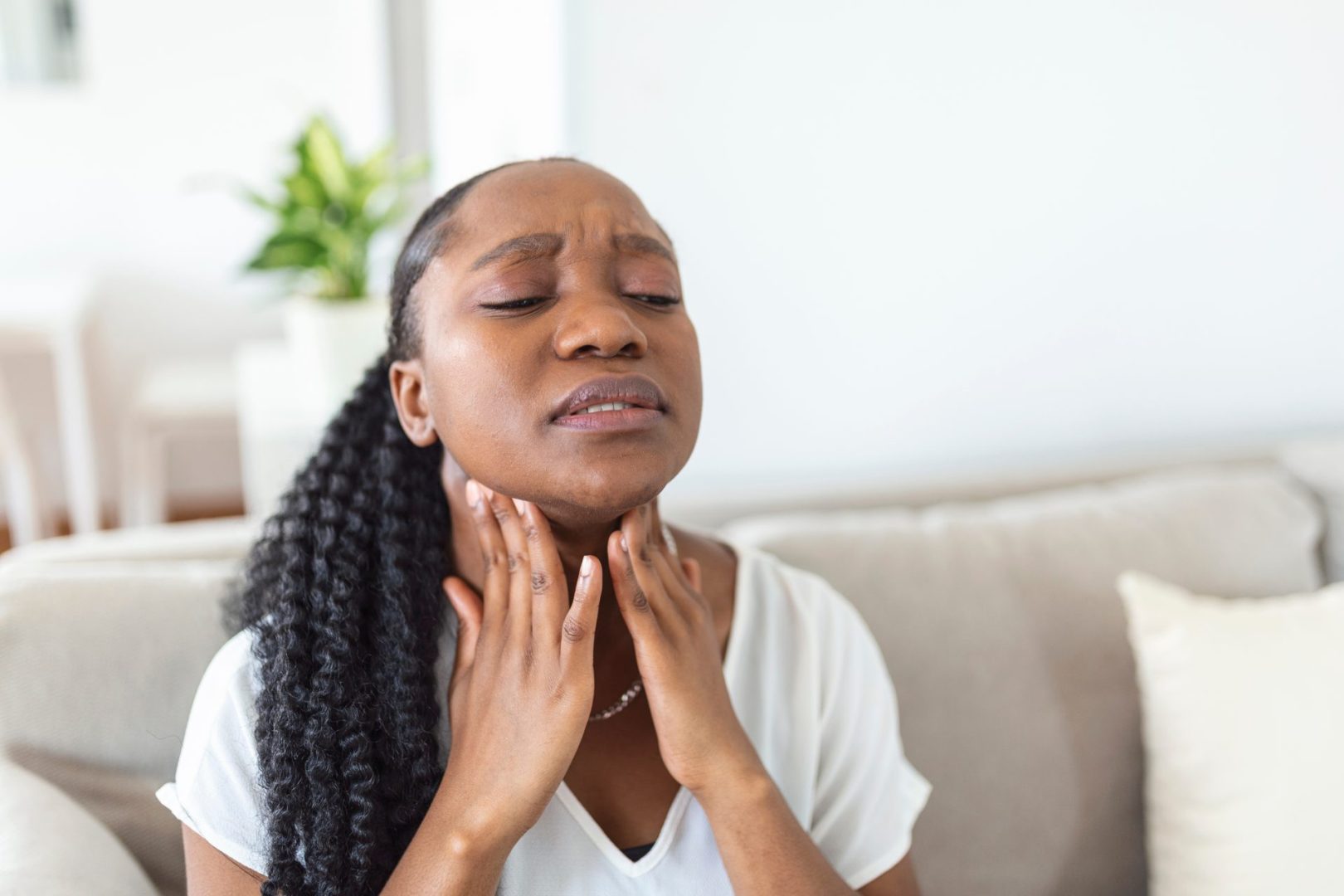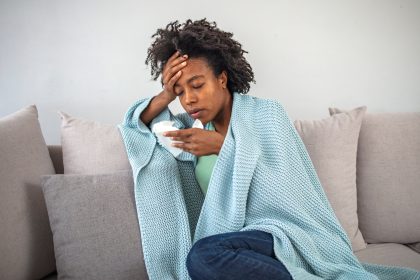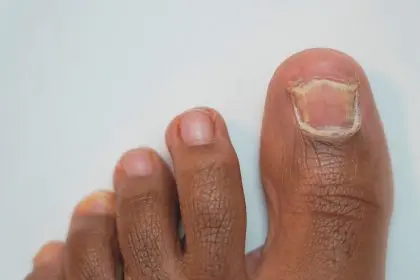Understanding this often-overlooked symptom could help millions of allergy sufferers recognize when their body is sending important signals about their immune response.
When most people think of allergies, they picture sneezing, watery eyes, and runny noses—but there’s another symptom that often goes unrecognized: swollen lymph nodes. These small, bean-shaped structures serve as crucial filtering stations in your immune system, and their enlargement during allergy season provides important clues about how your body responds to environmental triggers.
Research shows that allergies affect approximately 50 million Americans annually, with symptoms ranging from mildly annoying to severely debilitating. While most allergy sufferers recognize common symptoms, many remain unaware that their seasonal sniffles and tender neck lumps share a direct connection.
Understanding this relationship can help you better manage your allergies and know when swollen nodes might signal something more serious requiring medical attention. Here’s what health experts want you to know about the intriguing connection between allergies and your lymphatic system.
How your immune system creates this surprising symptom
Allergies develop when your immune system identifies harmless substances—like pollen, pet dander, or certain foods—as dangerous invaders. This misidentification triggers a cascade of defensive reactions designed to protect your body from perceived threats.
During this process, your immune system releases inflammatory chemicals such as histamines, which cause the classic allergy symptoms of itching, redness, and swelling. These chemicals aim to flush allergens from your body through increased mucus production and inflammatory responses in affected tissues.
Your lymphatic system plays a critical role in this immune response. This network of vessels and nodes functions as your body’s cleanup crew, filtering lymph fluid that contains immune cells, waste products, and unwanted substances. The system includes approximately 800 lymph nodes strategically positioned throughout your body, with significant clusters in the neck, armpits, chest, abdomen, and groin.
When allergens enter your system, your lymph nodes shift into overdrive, processing increased amounts of inflammatory cells and waste materials. This heightened activity can cause the nodes to enlarge and sometimes become tender to the touch—particularly those in the neck and behind the ears, which filter drainage from the sinuses and throat areas most affected by respiratory allergies.
This swelling represents your lymphatic system working correctly, though uncomfortably, to manage the immune response triggered by allergen exposure. The nodes essentially become processing centers for the increased cellular traffic resulting from your allergic reaction.
When allergies lead to secondary infections
Allergy sufferers face a triple threat during peak seasons: First, the direct allergic reaction causes uncomfortable symptoms; second, prolonged inflammation damages protective barriers in the sinuses and airways; and third, this damage creates perfect conditions for bacterial growth, potentially leading to infections that further stress the lymphatic system.
Research indicates that people with allergies are approximately three times more likely to develop sinusitis—a painful infection of the sinus cavities—than those without allergies. This increased risk stems from allergy-induced swelling that blocks normal sinus drainage, creating stagnant pools of mucus where bacteria thrive.
When sinusitis develops, your immune system must mount an additional defense against bacterial invaders. This intensified immune response further activates your lymphatic system, often resulting in more pronounced lymph node swelling than allergies alone would cause.
The nodes most commonly affected during these combined allergic and infectious processes include the submandibular nodes beneath your jaw, the cervical nodes along your neck, and sometimes the nodes behind your ears. These particular locations correspond to the drainage pathways from your sinuses and throat, explaining their involvement during upper respiratory issues.
This cascade from allergies to infection explains why some allergy sufferers experience persistent or worsening lymph node swelling despite taking allergy medications. The underlying infection requires specific treatment beyond allergy management to resolve the lymphatic response completely.
How to identify allergy-related lymph node swelling
Distinguishing between lymph node swelling caused by allergies versus other conditions requires attention to several key characteristics. When allergies are the culprit, swollen lymph nodes typically appear as small, movable lumps about the size of a pea or bean under the skin, most commonly in the neck area, behind the ears, or under the jaw.
The timing of this swelling often correlates directly with exposure to known allergens. For instance, individuals with seasonal allergies might notice lymph node tenderness during spring pollen season, while those with pet allergies may experience swelling after spending time around cats or dogs.
Critically, allergy-related lymph node swelling rarely occurs in isolation. It almost always accompanies other characteristic allergy symptoms such as sneezing, itchy or watery eyes, nasal congestion, post-nasal drip, or skin reactions like hives or eczema flares. The absence of these classic allergy manifestations should raise questions about alternative causes for the swelling.
Another distinguishing feature is that allergy-related lymph nodes, while sometimes tender, generally remain soft and movable beneath the skin. They typically don’t feel fixed in place or unusually hard, characteristics that might suggest more concerning conditions requiring immediate medical evaluation.
The pattern of swelling also provides important clues. Allergic reactions most commonly affect lymph nodes on both sides of the body rather than causing isolated, unilateral swelling. This symmetrical pattern reflects the systemic nature of allergic responses, which typically affect the entire immune system rather than just one area.
Finally, allergy-related swelling often fluctuates in response to antihistamines and other allergy treatments. Improvement after taking over-the-counter allergy medications suggests an allergic cause, while persistent swelling despite these interventions might indicate another underlying issue.
When to seek medical attention for swollen nodes
While allergy-related lymph node swelling typically resolves with proper allergy management, certain warning signs warrant prompt medical evaluation. Healthcare providers emphasize that swelling persisting beyond two weeks despite appropriate allergy treatment deserves professional assessment.
Lymph nodes that continue to enlarge over time represent another red flag. Allergic reactions generally cause mild to moderate swelling that plateaus rather than progressively increasing in size. Growing nodes might indicate infection or potentially more serious conditions requiring specific diagnosis and treatment.
The physical characteristics of swollen nodes provide important diagnostic clues. Seek medical care if lymph nodes feel extremely hard, appear fixed or immovable under the skin, or cause significant pain beyond mild tenderness. These qualities could suggest processes beyond typical allergic reactions.
Pay particular attention to swollen lymph nodes that appear without any accompanying allergy symptoms. The absence of sneezing, congestion, or itchy eyes alongside lymphatic swelling points toward non-allergic causes that merit investigation.
Certain accompanying symptoms should trigger immediate medical evaluation. These include unexplained fever, night sweats, unexplained weight loss, persistent fatigue, or widespread lymph node swelling affecting multiple areas of the body simultaneously. This constellation of symptoms requires comprehensive evaluation to rule out more serious conditions.
Remember that while allergies commonly cause mild lymph node swelling, they should never be assumed to be the definitive cause without proper assessment, particularly when swelling persists or appears alongside concerning symptoms. When in doubt, consult a healthcare provider for proper evaluation.
Effective treatments that target both allergies and swelling
Addressing allergy-related lymph node swelling requires a two-pronged approach: managing the underlying allergic reaction while also providing symptomatic relief for the swollen nodes themselves. This comprehensive strategy tackles both the root cause and its uncomfortable manifestations.
Antihistamines form the cornerstone of allergy treatment by blocking histamine, the primary chemical mediator of allergic reactions. Over-the-counter options like Claritin (loratadine), Zyrtec (cetirizine), and Allegra (fexofenadine) can effectively reduce overall allergic inflammation, indirectly helping resolve lymph node swelling by calming the immune response.
For congestion that contributes to lymphatic backup, decongestants like pseudoephedrine (found in products like Allegra-D and Claritin-D) help shrink swollen nasal passages and improve drainage. However, these medications may raise blood pressure and should be used cautiously by those with certain health conditions.
Nasal corticosteroid sprays such as Flonase (fluticasone propionate) and Nasacort (triamcinolone acetonide) reduce inflammation directly in the nasal passages, decreasing allergy symptoms and potentially preventing the sinusitis that often exacerbates lymph node swelling. For optimal effectiveness, these sprays should be used consistently rather than intermittently.
When allergies progress to sinusitis, antibiotics may become necessary to clear bacterial infections that maintain lymphatic activation. Always complete the full prescribed course of antibiotics, even if symptoms improve earlier, to ensure complete resolution and prevent recurrence.
For direct relief of tender lymph nodes, several home approaches prove effective. Applying warm compresses to swollen areas for 15-20 minutes several times daily can soothe discomfort while promoting increased lymphatic drainage. The gentle heat helps dilate vessels and enhance fluid movement through congested nodes.
Maintaining proper hydration supports overall lymphatic function, as water helps thin mucus secretions and facilitates efficient lymph flow throughout the body. Aim for at least eight 8-ounce glasses daily, more during active allergy seasons or if experiencing increased mucus production.
Over-the-counter pain relievers like ibuprofen (Advil, Motrin) and acetaminophen (Tylenol) can reduce both inflammation and discomfort associated with swollen lymph nodes. Ibuprofen offers the added benefit of anti-inflammatory properties that directly address the swelling mechanism.
For those seeking long-term solutions beyond symptom management, immunotherapy through allergy shots or sublingual tablets gradually desensitizes the immune system to specific allergens. This approach can substantially reduce allergic reactivity over time, potentially preventing the cascade that leads to lymph node involvement.
Preventive strategies to avoid the allergy-lymph connection
Preventing allergy-related lymph node swelling begins with minimizing exposure to known allergens through strategic environmental controls and lifestyle adjustments. These proactive measures can significantly reduce the frequency and severity of allergic reactions that trigger lymphatic responses.
For those with seasonal allergies, monitoring pollen forecasts allows for planned reduction of outdoor activities during peak pollen days. Wearing sunglasses outdoors helps shield eyes from airborne allergens, while changing clothes and showering after extended outdoor exposure removes pollen particles that could prolong symptoms.
Indoor allergen management proves equally important. Using high-efficiency particulate air (HEPA) filters in home ventilation systems captures airborne allergens, while keeping windows closed during high pollen seasons prevents outdoor allergens from entering living spaces. Regular washing of bedding in hot water eliminates dust mites, while maintaining indoor humidity below 50% discourages mold growth.
Pet allergies require specific approaches such as designating pet-free zones within the home, particularly bedrooms, and using HEPA-equipped vacuum cleaners to remove pet dander from floors and furniture. Regular bathing of pets reduces allergen shedding, though this should be performed by someone without pet allergies.
Strengthening overall immune function through adequate sleep, stress management, and nutritious diet may help moderate allergic responses. Research suggests that certain nutrients, particularly vitamin D and omega-3 fatty acids, may help regulate immune function and potentially reduce allergy severity in some individuals.
For those with food allergies triggering lymphatic responses, meticulous label reading and communication with restaurant staff about ingredients remain essential prevention strategies. Carrying emergency medication for severe allergic reactions provides crucial protection against anaphylaxis.
Consistent preventive medication use often proves more effective than treating established symptoms. Starting prescribed allergy medications before anticipated exposure—such as beginning antihistamines a few weeks before seasonal allergies typically strike—can prevent the inflammatory cascade that eventually affects lymph nodes.
Finally, addressing allergies promptly helps prevent the sinus infections that often exacerbate lymph node swelling. Using saline nasal irrigation with devices like neti pots can physically flush allergens and excess mucus from nasal passages, helping maintain clear sinuses and potentially preventing bacterial infection.
By understanding the connection between allergies and lymph node swelling, you can take proactive steps to manage this often-overlooked symptom. While swollen nodes generally represent a normal immune response to allergens, being alert to warning signs ensures appropriate care when needed. With proper treatment and preventive strategies, most people can effectively manage both their allergies and the lymphatic responses they trigger, improving overall comfort and quality of life throughout allergy season.












